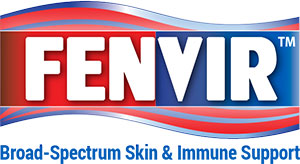Prunella Vulgaris
Other names: self-heal, heal-all
Prunella Vulgaris is an herbaceous plant from the mint family with a long history of time-honored use. The leaves have been used externally as an antiseptic and to promote healing. Taken internally, it has been used in many cultures as a medicinal tea.
These benefits may be directly associated with the herb’s nutrient content, which includes vitamins A and C, rutin, flavonoids, antioxidants, alkaloids, phenols, tannins, proteins, lipids and glycoside.
One of the most prominent antioxidants found in Prunella Vulgaris is rosmarinic acid. Studies have attributed the plants potential to support the skin’s response toUVA radiation to this particular nutrient. Additionally, research shows that Prunella Vulgaris may help to promoted defenses against UVA induced changes that cause DNA damage, and may also work as a photo-protective agent.
In one study, researchers noted that “P. vulgaris and RA, used in skin care cosmetics, may offer protection against UVA-induced oxidative stress and may be beneficial as a supplement in photoprotective dermatological preparations.” [3]
Studies on Prunella Vulgaris:
- Han EH, Choi JH, Hwang YP, Park HJ, Choi CY, Chung YC, Seo JK, Jeong HG. Immunostimulatory activity of aqueous extract isolated from Prunella vulgaris. Food Chem Toxicol. 2009 Jan;47(1):62-9. doi: 10.1016/j.fct.2008.10.010. Epub 2008 Oct 17.
- Lamaison JL, Petitjean-Freytet C, Carnat A. [Medicinal Lamiaceae with antioxidant properties, a potential source of rosmarinic acid]. Pharm Acta Helv. 1991;66(7):185-8. French. PMID: 1763093
- Psotova J, Svobodova A, Kolarova H, Walterova D. Photoprotective properties of Prunella vulgaris and rosmarinic acid on human keratinocytes. J Photochem Photobiol B. 2006 Sep 1;84(3):167-74. Epub 2006 Apr 21. PMID: 16631374
- Rasool R, Ganai BA, Akbar S, Kamili AN, Masood A. Phytochemical screening of Prunella vulgaris l. – an important medicinal plant of Kashmir. Pak J Pharm Sci. 2010 Oct;23(4):399-402. PMID: 20884453
- M. Sánchez-Campillo, J.A. Gabaldon, J. Castillo, O. Benavente-García, M.J. Del Baño, M. Alcaraz, V. Vicente, N. Alvarez, J.A. Lozano. Rosmarinic acid, a photo-protective agent against UV and other ionizing radiations. Food and Chemical Toxicology, Volume 47, Issue 2, February 2009, Pages 386-392
Other Studies:
- Huang R, Zhao M, Yang X, Huang J, Yang Y, Chen B, Tan J, Huang J, Li Z, Lv Y, Ji G. Effects of Prunella vulgaris on the mice immune function. PLoS One. 2013 Oct 30;8(10):e77355. doi: 10.1371/journal.pone.0077355. eCollection 2013.
- Fang X, Chang RC, Yuen WH, Zee SY. Immune modulatory effects of Prunella vulgaris L. Int J Mol Med. 2005 Mar;15(3):491-6. PMID: 15702244
- Wu H, Gao M, Ha T, Kelley J, Young A, Breuel K. Prunella vulgaris aqueous extract attenuates IL-1β-induced apoptosis and NF-κB activation in INS-1 cells. Exp Ther Med. 2012 Jun;3(6):919-924. Epub 2012 Mar 23. PMID: 22969993
- Skottová N, Kazdová L, Oliyarnyk O, Vecera R, Sobolová L, Ulrichová J. Phenolics-rich extracts from Silybum marianum and Prunella vulgaris reduce a high-sucrose diet induced oxidative stress in hereditary hypertriglyceridemic rats. Pharmacol Res. 2004 Aug;50(2):123-30. PMID: 15177299
- Guowen Zhang, , Li He, Mingming Hu. Optimized ultrasonic-assisted extraction of flavonoids from Prunella vulgaris L. and evaluation of antioxidant activities in vitro. Innovative Food Science & Emerging Technologies, Volume 12, Issue 1, January 2011, Pages 18–25.
- Xia N, Bollinger L, Steinkamp-Fenske K, Förstermann U, Li H. Prunella vulgaris L. Upregulates eNOS expression in human endothelial cells. Am J Chin Med. 2010;38(3):599-611. PMID: 20503475

